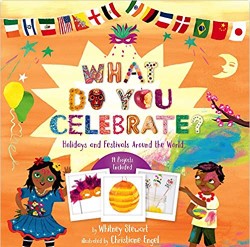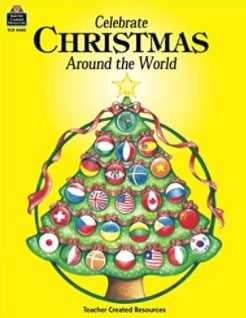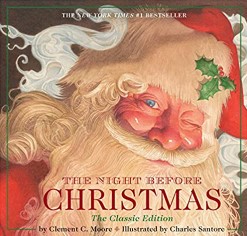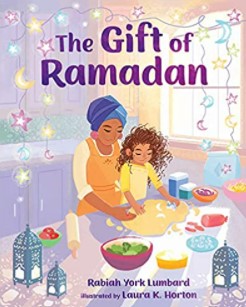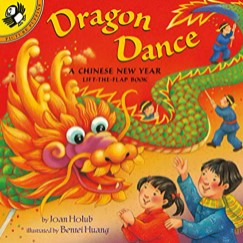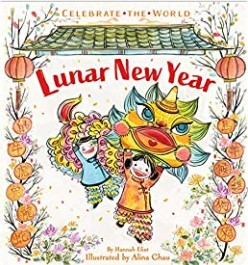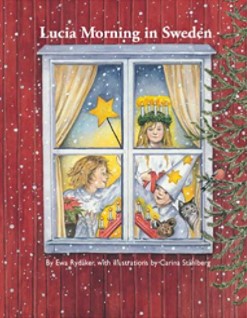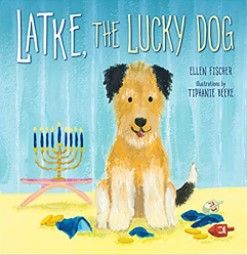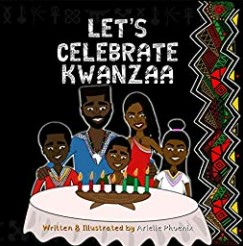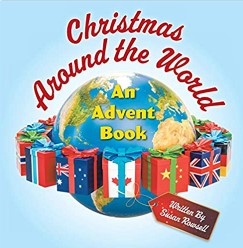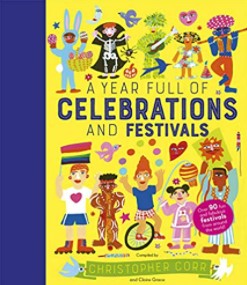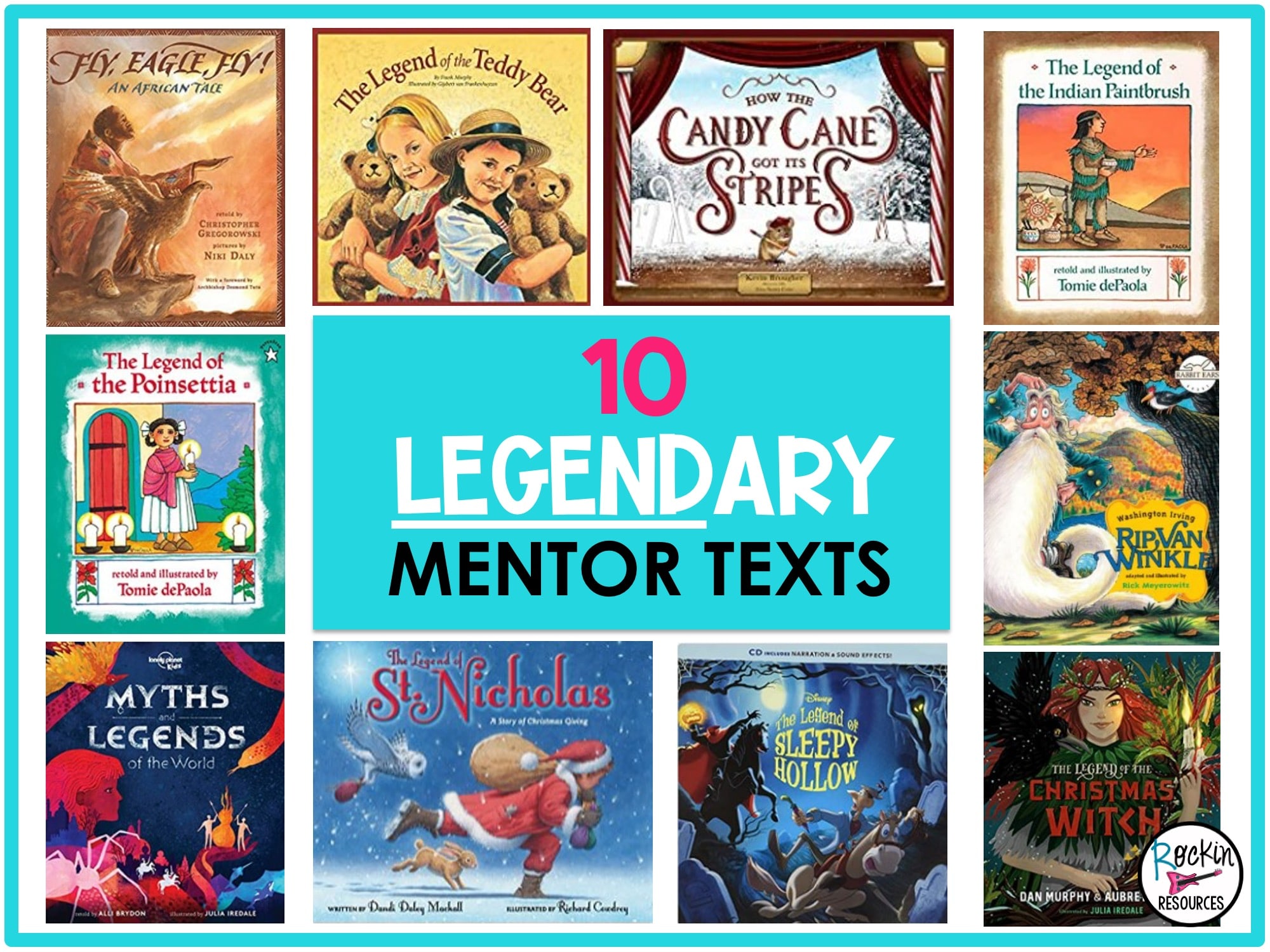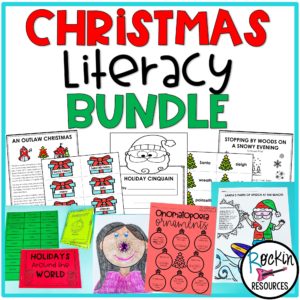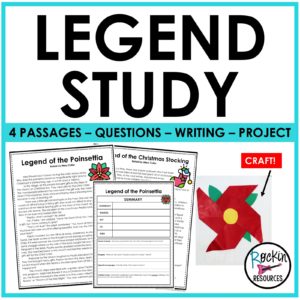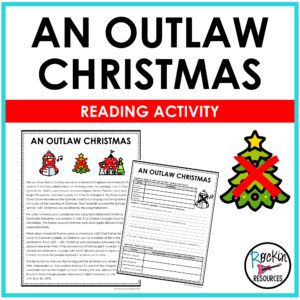Although we all have our unique traditions that are special to our own culture and religious backgrounds, there are so many other ways to celebrate themes of family, love, and gratitude that are central to many holidays that can be found around the world. Listed here are 20 mentor texts that feature international holidays, as well as classic Christmas traditions, to use within the classroom as tools for expanding students’ cultural awareness this holiday season. Some books feature large collections of many different holidays, whereas others focus on one. Regardless, these books offer students an opportunity to learn about the deeper meanings behind familiar and unfamiliar holidays in an engaging and fun way. I love to expose my students to these books to complement my HOLIDAYS AROUND THE WORLD PROJECT! Check out the 20 more activities to do with your students this time of year!
Travel around the globe and take a journey to visit the world’s many amazing festivals, celebrations, and traditional holidays enjoyed by people of all walks of life, in every corner of the world. This collection of holidays provides young readers with engaging illustrations and interesting facts that inform them about the many different cultures and traditions that can be found on our planet. Whether it be a camel marathon in the Sahara Desert, the dancing skeletons of Mexico’s Day of the Dead, or the explosion of colors at Holi, the Hindu Festival of Colors, readers are sure to learn a lot about the diversity of the world and how we all have our own ways of celebrating life!
Teacher tip: Take a poll in class for which holiday (not from the U.S.) was most interesting to your students. Whichever holiday has the most votes will then become the focus of a cultural discussion within the classroom, wherein you will all learn more about the traditional attire, food, and activities that take place during the event. You could even go so far as to bring in a dish that is commonly eaten on that holiday for a more immersive experience!
Teacher tip: Each holiday spread comes with instructions for festive crafts. Divide your class into groups, with each cluster responsible for making their holiday-specific crafts! Or complete these crafts as a classroom for whichever holiday is the top favorite.
Celebrate diversity this holiday season with a read-through of this collection of Christmas activities from over 20 countries. Along with background cultural context, this book provides readers with activities, carols, legends, recipes, and more!
Teacher tip: Have a holiday discussion with your class about which of the new winter traditions intrigue them. Venture to recreate some of the crafts specific to the holidays of interest to encourage students to engage and respect different cultural practices.
This book offers young readers an easy-to-understand text with bold illustrations that retells the story of Hanukkah. Along with the fun games and yummy food that are holiday traditions, the story of an ancient miracle lies at the heart of Hanukkah.
Teacher tip: This book includes a traditional recipe for latkes, as well as directions for how to play the dreidel game. If appropriate within your classroom setting, invite your students to learn about this Jewish holiday using these fun activities that come along with your copy of The Story of Hanukkah!
The Night Before Christmas is a classic Christmas book for families and classrooms alike. Told in poetic verse, this book contains fantastic rhyme and beautifully intricate illustrations that will surely captivate young readers. This book also includes a large four-page foldout to encourage readers’ immersion in the story of Christmas.
Teacher tip: Create your own holiday poems using rhyme and meter similar to those found in The Night Before Christmas.
The month of Ramadan is extremely important to Islamic culture, and there are many ways to take part in it! This story is about Sophia, a young girl who wants to fast for Ramadan this year after hearing from her grandmother that fasting makes people sparkly! When Sophia’s attempt at fasting fails, she begins looking for other ways to participate in Ramadan. The Gift of Ramadan is a multigenerational family story enumerating the many ways one can celebrate and honor the Islamic holiday, Ramadan.
Teacher tip: Ask your students to relate a time when they slipped up like Sophia did. What happened? How did they change course? What did they learn from the experience? This book not only discusses Ramadan traditions, but also teaches readers that there’s not always one single route to success!
A young girl named Archana gets to share her family’s annual Diwali (deh-vah-lee) celebration with all her friends from school this year! Archie helps set up decorations and arrange the food with great excitement. But a strong thunderstorm comes in, knocking out the power and soaking all the decorations! How can this festival of lights go on without electricity?
Teacher tip: At the back of the book there are word definitions and “how-to’s” for some of Archie’s crafts!
The Chinese Lunar New Year is introduced to readers through a fun and interactive lift-the-flap format. Join young children in their adventures of shopping at the outdoor market, eating New Year’s dinner with the family, receiving red envelopes from grandparents, and watching the amazing Lunar New Year’s Parade!
Teacher tip: Compare and contrast the Lunar New Year to the traditions of the U.S. in celebrating the new year. What’s different and what’s similar between the two cultures’ unique ways of celebrating? This can be done by using a Venn Diagram.
The fourth book in the Celebrate the World series highlights the Chinese New Year—also known as the Lunar New Year—teaching readers about the many festivities used to celebrate the holiday. Dancing with dragons, watching fireworks, lighting lanterns, and spending time with family are key components of the Chinese New Year, which are here depicted in artwork created by Chinese illustrator, Alina Chau.
Teacher Tip: The 15th day of the Chinese New Year is releasing lanterns. Create lanterns and hang them from the ceiling in the classroom to look like they are floating.
Nina is the smallest one in a family of Russian nesting dolls. Separated from her bigger sisters, Nina embarks on an incredible journey as a tale of hope unfolds. The Littlest Matryoshka is a beautifully written tale that exposes readers to Russian cultural traditions while also inspiring themes of hope and love.
Teacher tip: Acquire a set of matryoshka (Russian nesting dolls) for readers to use to follow along with the story’s action!
This book offers readers a simple and sweet introduction to Diwali, the five-day festival of lights! Bright illustrations depict Diwali’s vibrant decorations, lights, flowers, and lanterns while fun rhymes make this an accessible read for introducing young children to new cultures.
Teacher tip: For more information on the Diwali holiday, check out the back of this book! In the notes, you will find information that elaborates on the variations of Diwali celebrations throughout different regions of India and within groups including the Sikhs, Jains, Buddhists, and Hindus. The five days of Diwali are also outlined and explained for additional information on the multi-day celebration.
The Svennson family is busy preparing for the Swedish holiday, Lucia Day, which is celebrated on December 13th. The traditional story of Saint Lucia is told through the eyes of three modern-day Swedish children as they prepare and partake in the traditional activities of Lucia Day.
Teacher tip: This book provides sheet music, recipes, and sewing patterns for additional cultural immersion! Search for a traditional Lucia Day song on YouTube and see if it sounds like any holiday music that your students are familiar with.
While some children eagerly await a visit from Santa Claus each Christmas, Italian children celebrate a visit from La Befana! This story puts a modern spin on the classic legend of La Befana, with a character who is inspired by a brilliant star to bake star-shaped cookies to share with all the children in the land. These cookies are made with such great love that after just one bite, the individual starts to glow from within! Readers will meet La Befana, Befana’s friend, Martino, and the angel Epiphany within this Italian tale about sharing and holiday joy.
Teacher tip: This book would be an excellent addition to the classroom library for teaching students about multicultural holiday traditions. Start a holiday project in which students pick an unfamiliar holiday to report on, explaining what foods, stories, and activities are a part of the celebration.
Christmas Eve was going perfectly for Maria until she lost her mother’s diamond ring in a batch of tamales! Maria and her cousins attempt to eat their way out of trouble in a funny and desperate story about how a family comes together to turn their Christmas around.
Teacher tip: Look for the Spanish edition of this book, ¡Qué montón de tamales!, for bilingual classrooms!
Grandma Strega Nona works with her clumsy assistant, Big Anthony, and Bambolona, the baker’s daughter, in this tale of an Italian Christmas Eve feast. Many Italian Christmas customs are mentioned within the story alongside magical illustrations set within a southern Italian town.
Teacher tip: Check out more of the Strega Nona stories for even more exposure to Italian customs and traditions!
Latke is rescued from a shelter on the first night of Hanukkah and has some issues with learning house rules. Apart from some funny mishaps, Latke is a lucky dog who bears witness to the Jewish traditions within the celebration of Hanukkah.
Teacher Tip: Read about the Kwanza Kinara. Compare the Kwanzaa Kinara with the Hanukkah Menorah. What are the similarities of the candles? This can be done using a T-Chart.
Readers will learn about the seven principles of Kwanzaa, gaining cultural education as well as foundational virtues and life-lessons. This introduction to Kwanzaa incorporates African motifs in a fusion of past, present, and future to connect African culture, holidays, and principles to immerse readers in the bright and inspiring tale of Kwanzaa.
Teacher Tip: Have students either draw and color a Kwanzaa Kinara or make one out of the different colors of construction paper. Then write a list of the seven principals of Kwanzaa.
Counting down the days until Christmas Eve, this advent book travels the world to discover the many different holiday celebrations practiced by its many cultures. Readers will learn about traditions from Africa, New Zealand, Australia, Germany, Russia, Peru, Canada, Iceland, the U.S., Scotland, England, Hungary, Norway, and more!
Teacher tip: Discuss common themes that are found throughout the world’s unique holiday traditions to cultivate cultural understanding to link together all walks of life in a celebration of love, family, and community.
Over 90 festivals and celebrations from around the world are explained in fact-filled descriptions with electric illustrations in this text. Students can learn that some holidays are celebrated for religious, cultural, or historical reasons, whereas others are simply just for fun! This collection of holidays is perfect for any classroom looking to expand students’ exposure to cultures different from their own.
Teacher tip: This book is broken down into the four seasons, making it a great addition to the classroom all-year-round!
During the ninth month of the year, when the first crescent moon is up in the sky, the celebration of Ramadan begins. Readers will learn about the traditions of Ramadan and themes like the importance of being thankful, helping others, and self-reflection that are all central to the Muslim celebration of Ramadan.
Teacher tip: No matter your religious belief, the values of Ramadan are universal and can teach us all about the deeper meaning of life. After reading this book, ask your students to reflect on and describe the values of Ramadan that they find to be similar to values taught in their own culture.
Now you have a comprehensive list of the variety of ways people around the world celebrate the holidays. Your kiddos will have an engaging experience as they learn about different cultures! Don’t forget to check out the Holidays Around the World Webquest!
See Similar Blog Posts:
Discover Related Resources:
-
Christmas Literacy Bundle
Original price was: $29.11.$19.99Current price is: $19.99. -
Christmas Synonyms
$1.99 -
Holiday ABC Order
$1.99
Share this Post on Pinterest:




